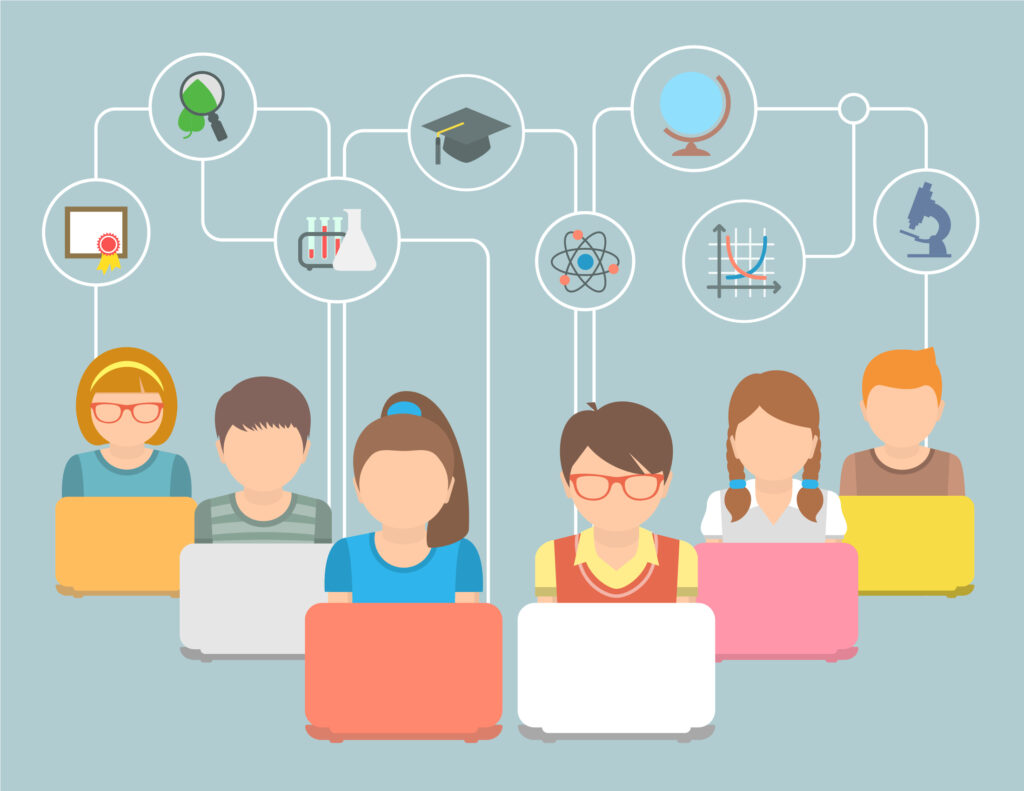
Explore the video provided and reflect on the themes of a PLN in a professional capacity:
Reflecting on the video with Brad Baker he discusses “hear the truth first” (Miller, 2021) What he means by this is by “[hearing] the information second or third hand it generally loses its meaning at some point” (Miller, 2021). When Baker proposed this point I automatically connected this to the game telephone. Within this game, you start off with one message by the time it reaches the last person it is typically alternated and not the exact words that were said at the start of the game. I connect this game to what baker said because I definitely find this resemblance to occur more frequently due to mass social media. If the words aren’t coming from the word of mouth of the individual speaking it can lead to misinterpretation and false information. With the power of social media, it is important to think clearly before sharing your thoughts and opinions on your PLN. Having a space for misinterpretation can cause others to intervene in the conversation and speak of things that can potentially ruin your professional life.
Which social media platforms are beneficial in education?
Couros (2010) mentioned several social media search tools such as Technorati, Google Blog Search, and WhosTalking (p. 125). These media platforms are useful in education as it provides students with the tools to search a mass amount of information. Other platforms such as Flock, Feedly, Google Reader, and Bloglines are great sources for those who view and interact with social media and are beneficial for keeping track of students’ blog posts (Couros, 2020, p. 126). Veletsianos (2010) also points out several other platforms that are beneficial for students’ learning such as Moodle, Ning, WebCT (BlackBoard), and Wiki (117-119).
I personally find social media platforms such as YouTube, Google, Twitter, TedTalks,
Facebook messenger and Google Docs to be the most beneficial in my education. Each platform offers different tools for engaging and learning. Facebook messenger offers features that allow you to add numerous members to a group. This is very beneficial when it comes to courses where you have group projects. It creates an easy space for students to engage in course material and organize deadlines. Another social media platform I gravitate towards daily is YouTube. This social media platform provides an abundance of resources for nearly every course subject. If I need extra guidance with statistics I can always count on Khan Academy to teach me math concepts. Each of these social media platforms offers different tools which is overall why it attracts people to each database.
Consider the equality that exists when all have the same platform to engage community dialogues:
The equality that exists when all are given the same platform to engage in community dialogues is the access to the same resources, and freedom to speak. The example that I think of is Twitter. If all individuals have a Twitter account, each user is given access to tweet, retweet, and like their own and others’ tweets. This engagement feature provides each individual the opportunity to express and explore a wide range of community dialogues. Another platform example I think of for being given an equal opportunity to engage in community dialogues is with our weekly blogs. Each individual is granted access to share their thoughts on certain subjects and read others’ blogs as well as engage through leaving comments. These two examples allow for individuals to engage in the process of connectivism by discussing, asking questions, and learning from others.
I responded to Kelsey’s and Zhefu’s Blog posts this week!
Kelsey’s Blog:
Zhefu’s Blog:
Reference
Couros, A. (2010). Developing Personal Learning Networks for Open and Social Learning.
Miller. (2021). Brad Baker EDCI 338. Youtube. https://www.youtube.com/watch
November 9, 2021 at 2:31 pm
HI Kyla! I loved the analogy between Baker’s thoughts and a game of telephone. It brought a new level of understanding for me!! Information on the internet always gets misinterpreted and that is why it is important that we go straight to the source in order to clarify.
November 28, 2021 at 4:08 pm
Hi Tanvir!
Thank you for your positive feedback! I’m very glad the analogy helped!
November 9, 2021 at 6:45 pm
Hi kyla, I liked what you had to say about the benefits that are to be had when everyone has a voice. The point about twitter was spot on as it is truly a global social media platform where there are very little barriers for anyone to communicate. Due to the algorithms used it also allows likeminded people to connect while still being exsposed to outside perspectives.
November 28, 2021 at 4:11 pm
Hi Aidan!
Thanks for commenting on my blog! I definitely agree that the algorithms on Twitter allow like-minded people to connect while still being exposed to outsider perspectives. That was a great point!
November 30, 2021 at 9:43 pm
Hi Kyla, I really enjoyed this blog post where you mention a lot of things! I’m particularly happy to see a lot of social media platforms that you listed (some of the them, I had no idea about). Also, your opinion on the equality that exists in social media platforms makes complete sense to me!
Thank you for sharing your thoughts!